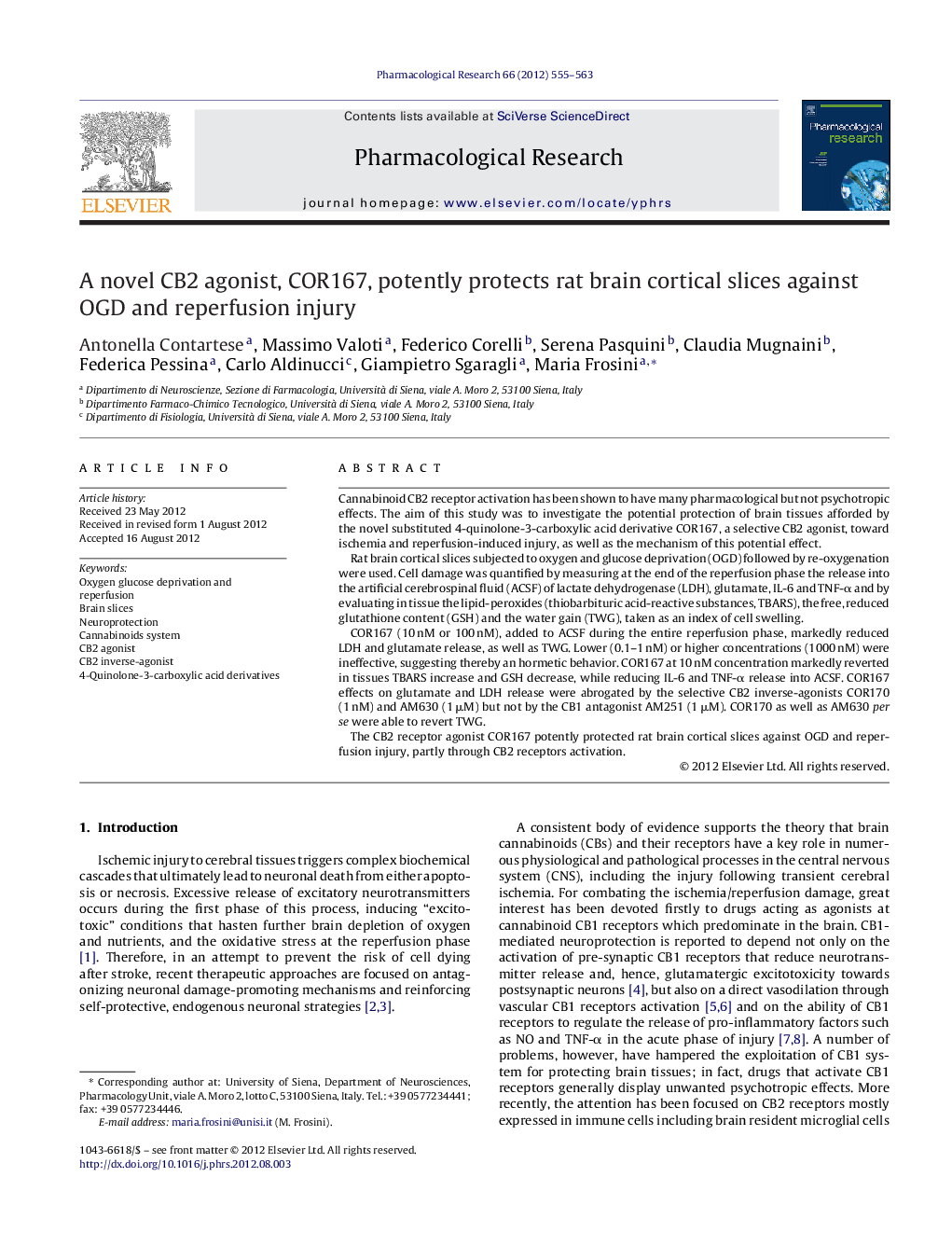| Article ID | Journal | Published Year | Pages | File Type |
|---|---|---|---|---|
| 2561456 | Pharmacological Research | 2012 | 9 Pages |
Cannabinoid CB2 receptor activation has been shown to have many pharmacological but not psychotropic effects. The aim of this study was to investigate the potential protection of brain tissues afforded by the novel substituted 4-quinolone-3-carboxylic acid derivative COR167, a selective CB2 agonist, toward ischemia and reperfusion-induced injury, as well as the mechanism of this potential effect.Rat brain cortical slices subjected to oxygen and glucose deprivation (OGD) followed by re-oxygenation were used. Cell damage was quantified by measuring at the end of the reperfusion phase the release into the artificial cerebrospinal fluid (ACSF) of lactate dehydrogenase (LDH), glutamate, IL-6 and TNF-α and by evaluating in tissue the lipid-peroxides (thiobarbituric acid-reactive substances, TBARS), the free, reduced glutathione content (GSH) and the water gain (TWG), taken as an index of cell swelling.COR167 (10 nM or 100 nM), added to ACSF during the entire reperfusion phase, markedly reduced LDH and glutamate release, as well as TWG. Lower (0.1–1 nM) or higher concentrations (1000 nM) were ineffective, suggesting thereby an hormetic behavior. COR167 at 10 nM concentration markedly reverted in tissues TBARS increase and GSH decrease, while reducing IL-6 and TNF-α release into ACSF. COR167 effects on glutamate and LDH release were abrogated by the selective CB2 inverse-agonists COR170 (1 nM) and AM630 (1 μM) but not by the CB1 antagonist AM251 (1 μM). COR170 as well as AM630 per se were able to revert TWG.The CB2 receptor agonist COR167 potently protected rat brain cortical slices against OGD and reperfusion injury, partly through CB2 receptors activation.
Graphical abstractFigure optionsDownload full-size imageDownload high-quality image (82 K)Download as PowerPoint slide
